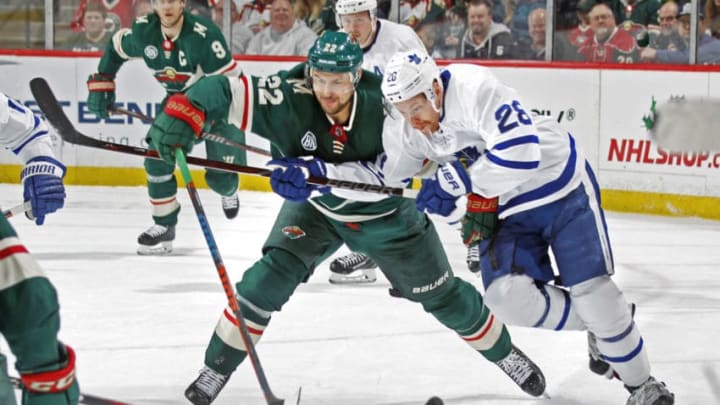
Minnesota Wild special teams lack any finish
The Minnesota Wild special teams proved lacking and it’s well-known that if you can’t get the game going with a man-advantage, you’re also likely to struggle at full-strength.
First and foremost, the Wild did a decent job of limiting the speedy Maple Leafs to just the one power-play.
However, the Maple Leafs top power-play unit features elite names like Mitch Marner, Auston Matthews and John Tavares. It’s a power-play that is proving, especially since the return of Matthews from injury, to not need more than one chance.
Unfortunately, that was exactly what occurred. The Maple Leafs required just 45 seconds to net the game’s opening goal, after Matt Dumba hooked Patrick Marleau.
This isn’t to berate the penalty-kill of the Wild; few teams can defend the speed and skill that Toronto move the puck about with at 5-on-4.
The Minnesota Wild power-play, by comparison, proved feeble. Despite having three opportunities with the extra-man, the Wild only managed two power-play shots on net.
Whilst obviously not boasting the same level of offensive talent on the man-advantage, the Wild should be able to generate enough to take at least one goal from six minutes of power-play time.
Given the size of the players they can place in front of net, with the likes of Charlie Coyle and Jordan Greenway, and the slick hands of Jason Zucker and Mikael Granlund, you expect a little more.
This isn’t a new problem either; it’s been the case for quite some time. If the Minnesota Wild are to trend upwards again and put themselves firmly back into the contention for the play-offs, they need to find a way to spark life into their special teams.
